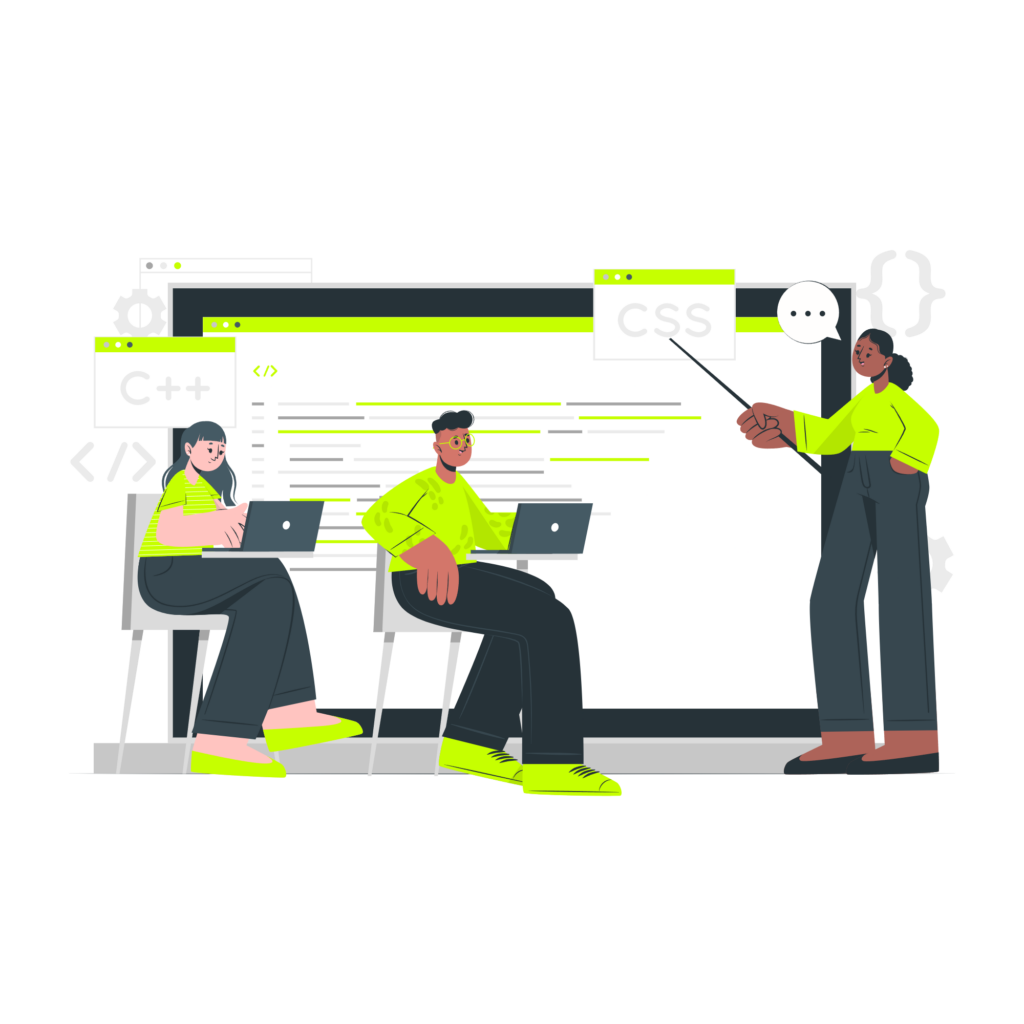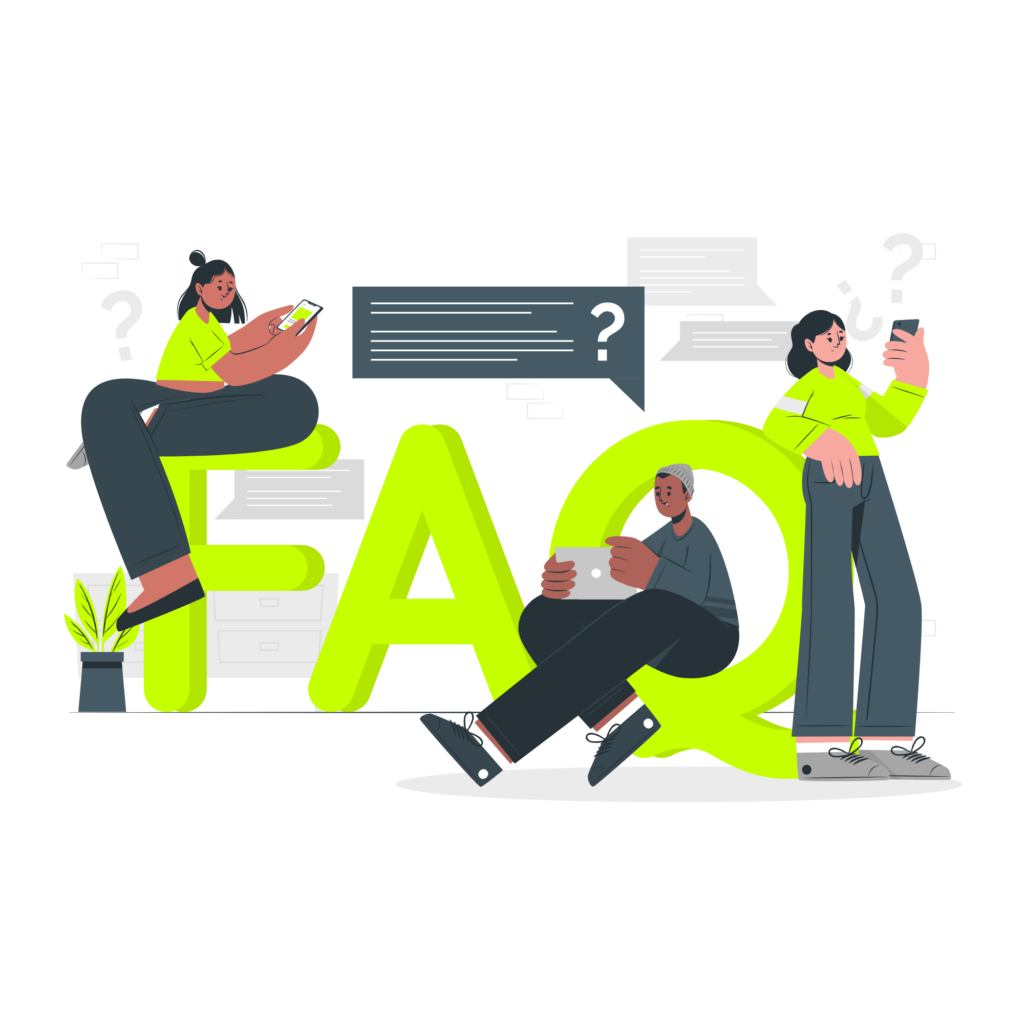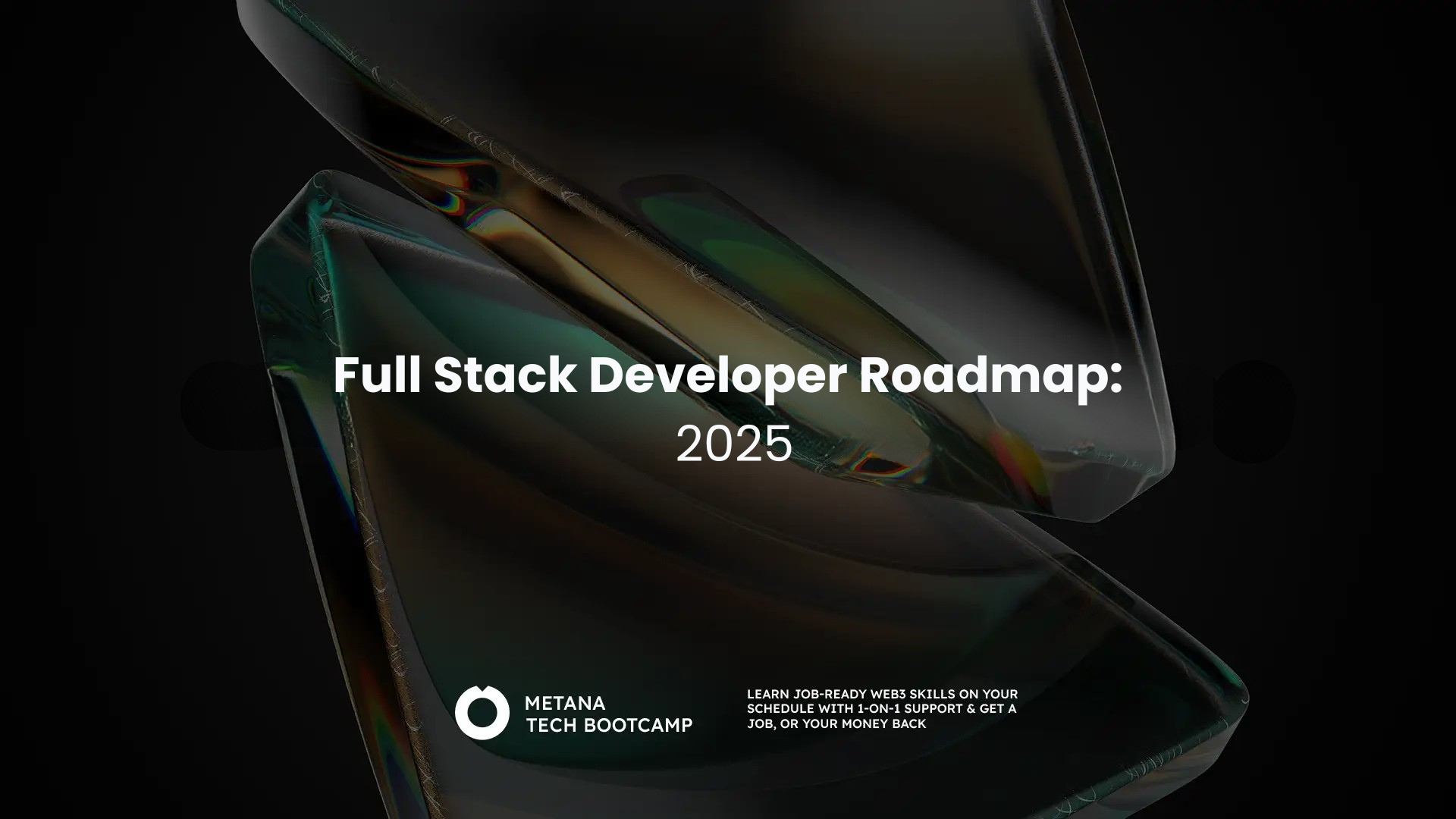Ever wonder how your favorite websites work? They’re not just pretty faces – they’re complex creations, and full-stack developers are the masterminds behind them. These tech wizards know both the flashy front-end (what you see) and the brainy back-end (what makes it tick). This gives them superpowers in the tech world, letting them build amazing things – and you can be one too!
Well, get ready to start an awesome journey with our Full Stack Developer Roadmap. We’ll break down the skills you need, the tools you’ll wield, and the awesome career paths you can unlock. Learning all this is super cool because, as a full stack developer, you can do so many different things in the tech world. You can build your own websites, fix stuff, and become a web-making hero! Get ready to code your way to the top!
Is It Hard to Become a Full Stack Developer?
No, it’s not too hard. To become a full-stack developer, you need to learn about both the front-end (what users see) and the back-end (server and database) of websites. There are many ways to learn these skills. You can take online courses, go to a bootcamp, or teach yourself. The important thing is to learn step by step. Start with the basics, practice a lot, and keep going. There are lots of resources and people who can help you learn. If you work hard and keep learning, you can become a full-stack developer.
Your Full Stack Developer Roadmap
Beginner Phase
Focus: Foundational web development concepts and basic front-end technologies.
Technologies and Topics:
- HTML & CSS: Learn to structure and style web pages.
- JavaScript Basics: Get started with programming logic and simple interactivity.
- Version Control with Git: Understand basic version control for managing your code.
- Responsive Design: Learn how to make web pages look good on all devices.
Recommended Resources:
Intermediate Phase
Focus: Server-side programming, databases, and advanced front-end techniques.
Technologies and Topics:
- Advanced JavaScript: Dive into more complex programming concepts.
- Node.js and Express.js: Learn about server-side JavaScript programming.
- Databases (SQL and NoSQL): Start with MySQL or MongoDB to manage data.
- Front-end Frameworks: React, Angular, or Vue.js for dynamic web applications.
Recommended Resources:
- The Odin Project’s Full Stack JavaScript Path
- Coursera’s Full-Stack Web Development with React Specialization
Advanced Phase
Focus: Building complex applications, learning deployment, and DevOps basics.
Technologies and Topics:
- Advanced Back-End Development: Learn about microservices, API design, and advanced database management.
- DevOps Tools and Practices: Basic understanding of deployment, containerization (Docker), and CI/CD pipelines.
- Full Stack Project Building: Work on comprehensive projects that combine both front-end and back-end technologies.
- Security Best Practices: Learn about web security fundamentals to protect your applications.
Recommended Resources:
- Udemy’s Full Stack Web Development: HTML, CSS, React & Node
- edX’s CS50’s Web Programming with Python and JavaScript
Additionally coding bootcamps offer another option, providing intensive, immersive training over months, often culminating in job-ready portfolios. While they may have costs, their focus on practical skills and career guidance can be a valuable investment for some.
No matter your chosen path, remember: consistency is key! Devote a few hours each day to learning, building projects, and participating in online communities like the legendary DEV Community. Don’t be afraid to stumble, ask questions, and most importantly, have fun with the process!

Becoming a skilled full stack developer isn’t just about mastering coding and technical tools. It’s equally important to cultivate a range of non-technical skills and understand the broader landscape of professional development. Here’s a guide to help you go beyond the tools:
Essential Non-Technical Skills
- Problem-Solving: Develop the ability to think logically and creatively to overcome challenges and bugs. Practice breaking down complex problems into smaller, manageable parts.
- Communication: Hone your ability to communicate clearly and effectively, both in writing and verbally. This includes explaining technical concepts to non-technical stakeholders and collaborating with team members.
- Project Management: Learn to manage time and resources efficiently. Familiarize yourself with Agile methodologies and tools like Jira or Trello for organizing tasks and projects.
Building a Professional Portfolio
- Showcase Your Work: Create a portfolio website displaying your projects. Include a variety of work, from simple designs to complex applications, to demonstrate the breadth of your skills.
- Document Your Process: For each project, explain your development process, the challenges faced, and how you overcame them. This narrative can be as important as the final product.
Networking and Career Opportunities
- Networking: Attend meetups, tech conferences, and workshops. Platforms like Meetup can help you find relevant events.
- Online Presence: Be active on platforms like LinkedIn and GitHub. Share your projects, write about your learning journey, and connect with other professionals.
- Finding Opportunities: Look for freelance projects on websites like Upwork or Freelancer. For full-time roles, websites like Indeed and Glassdoor can be valuable resources.
Continuous Learning
- Online Courses: Platforms like Coursera, Udemy, and edX offer advanced courses to keep your skills updated.
- Join Communities: Participate in online forums and communities like Stack Overflow or GitHub to stay engaged with the latest trends and discussions.
- Attend Conferences: Tech conferences and webinars can provide insights into emerging technologies and industry best practices. Websites like Techmeme list upcoming tech events.
Remember, the journey to becoming a successful full stack developer is ongoing. Stay curious, keep learning, and embrace the ever-evolving nature of technology.
Front-End Technologies
When you’re making websites, there are some really important tools that you use to make them look cool and work well. Think of them like your superhero tools for building websites.
- HTML (Hypertext Markup Language): HTML is the backbone of any website, responsible for structuring the web content. It’s where you define the layout and organize elements like headings, paragraphs, and images.
- CSS (Cascading Style Sheets): CSS is the styling language used to design and enhance the visual presentation of your website. It allows you to add colors, layouts, fonts, and animations to make your website attractive and responsive.
- JavaScript: JavaScript is a powerful scripting language that makes websites interactive. It lets you create dynamically updating content, control multimedia, animate images, and pretty much everything else that makes a website interactive.
- TypeScript: TypeScript is a superset of JavaScript that adds static types. This means it can catch errors and bugs before your code runs, making it a powerful tool for larger projects or teams.
- Front-End Frameworks:
- React: Developed by Facebook, React is a popular JavaScript library for building user interfaces, especially single-page applications. It’s known for its virtual DOM feature, which enhances performance and efficiency.
- Angular: Developed by Google, Angular is a comprehensive framework that’s great for building complex, enterprise-level applications. It’s a bit more structured and robust than some other frameworks.
- Vue.js: Vue.js is known for its simplicity and flexibility. It’s an excellent choice for those new to front-end frameworks, offering an easy learning curve and a reactive and composable data model.
Back-End Technologies
In the world of back-end development, there are several powerful frameworks that play a crucial role in building robust, fast, and secure web applications. These frameworks not only streamline the development process but also enhance the functionality and scalability of web applications.
- Django (Python): Django, built on Python, is known for its simplicity and effectiveness in building complex web applications. It follows the “batteries-included” philosophy, meaning it comes with numerous built-in features for everything from authentication to managing databases.
- Laravel (PHP): Laravel, a PHP framework, is praised for its elegant syntax and rich set of functionalities which simplify tasks like routing, sessions, caching, and authentication. It’s particularly favored for its powerful ORM, simple routing, and easy integration with mail services.
- Ruby on Rails (Ruby): Often called Rails, this framework is built on Ruby and is known for its convention over configuration approach. It’s a great tool for building database-backed web applications and is lauded for its simplicity and the speed with which developers can build applications.
- Express.js (Node.js): Express.js is a minimal and flexible Node.js web application framework that provides a robust set of features for web and mobile applications. It’s known for its speed, simplicity, and scalability, making it a popular choice for building APIs.
Using these tools helps make websites that are safe, can handle lots of visitors, and work really smoothly. It’s important for back-end developers to know these tools to make all kinds of cool web stuff.
Conclusion
In the exciting world of making websites and apps, being a full stack developer is like being a tech superhero. You get to work on both the front part (what you see on a website) and the back part (where all the website’s secrets are kept). But the most important thing is to keep learning new things.
The world of making websites and apps is always changing. There are always new tools and fun ways to do things. So, full stack developers have to be like curious explorers, always ready to learn new tricks and use new tools.
To be the best in making websites and apps, you need to practice a lot and not stop learning. It’s like a never-ending adventure where you get to discover new lands and treasures. And that’s what makes being a full stack developer so awesome.

What is Full Stack Development?
- Full stack development involves working on both the front-end and back-end parts of web applications. This includes everything from creating user interfaces to handling database operations.
Which Programming Languages are Essential for Full Stack Development?
- Key languages include HTML, CSS, JavaScript for the front end, and languages like Python, Ruby, or Java for the back end. Knowledge of frameworks like React (front end) and Node.js (back end) is also valuable.
How Long Does It Take to Become a Full Stack Developer?
- It varies based on your learning pace and background, but typically, it can take anywhere from a few months to a few years to gain a solid foundation in full stack development.
Do I Need a Degree to Become a Full Stack Developer?
- While a degree in computer science or a related field can be beneficial, many full stack developers are self-taught or use online resources to learn.
What is the Average Salary for a Full Stack Developer?
- Salaries vary based on location, experience, and company, but full stack developers are generally well-compensated due to their diverse skill set.
Can Full Stack Developers Work Remotely?
- Yes, many full stack development roles offer the flexibility to work remotely, especially in tech companies and startups.
Is Full Stack Development a Good Career in 2025?
- Absolutely, with the ongoing digital transformation in various industries, the demand for skilled full stack developers continues to grow.
How Does Full Stack Development Differ From Data Science?
- Full stack development focuses on building web applications, while data science revolves around analyzing and interpreting complex digital data.
Can a Full Stack Developer Build Mobile Apps?
- Yes, especially with technologies like React Native, full stack developers can extend their skills to build cross-platform mobile apps.
Is Full Stack Development More Challenging Than Front-End Development?
- It can be more challenging as it covers a broader range of technologies and requires an understanding of both client-side and server-side development.





